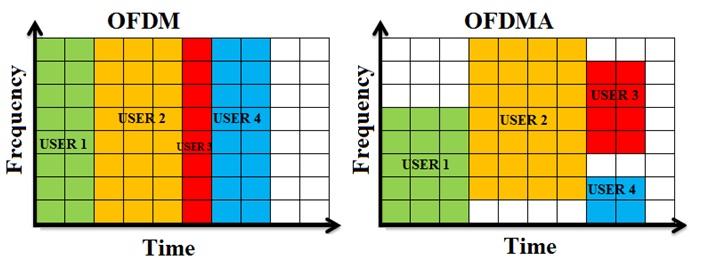Orthogonal frequency Division Multipla Access

At the core OFDMA is a frequency division multiplexing scheme. Where the broadband, frequency range is split into a number of narrower channels. In the case of 4G, LTE, the 5MHz channels are split into 180kHz narrow bands. The advantage of narrower bands is that the multiplexing can be simpler BUT the total amount of data transmitted is greater.
The problem with many narrow channels is that there is interference between the smaller bands, and guard channels need to be inserted. These guard channels are there to protect the other channels and are a 'waste' in terms of data transmitted. In an orthogonal system, the peaks, and troughs of the channels are so organised so that the do not interfere.
To provide multiple access we can view the transmission as a graph with frequency in the y-axis and time along the x-axis. Theis area is split into a number of 'squares'. In LTE these are 180kHz and 0.5ms. A user will be allocated a rectangular block through which to transmit the data. Note that this system is usually only used for the download link as this uses much more of the available capacity.
*u* ©mobilephonetechnology.co.uk all rights reserved 2017- 2025



